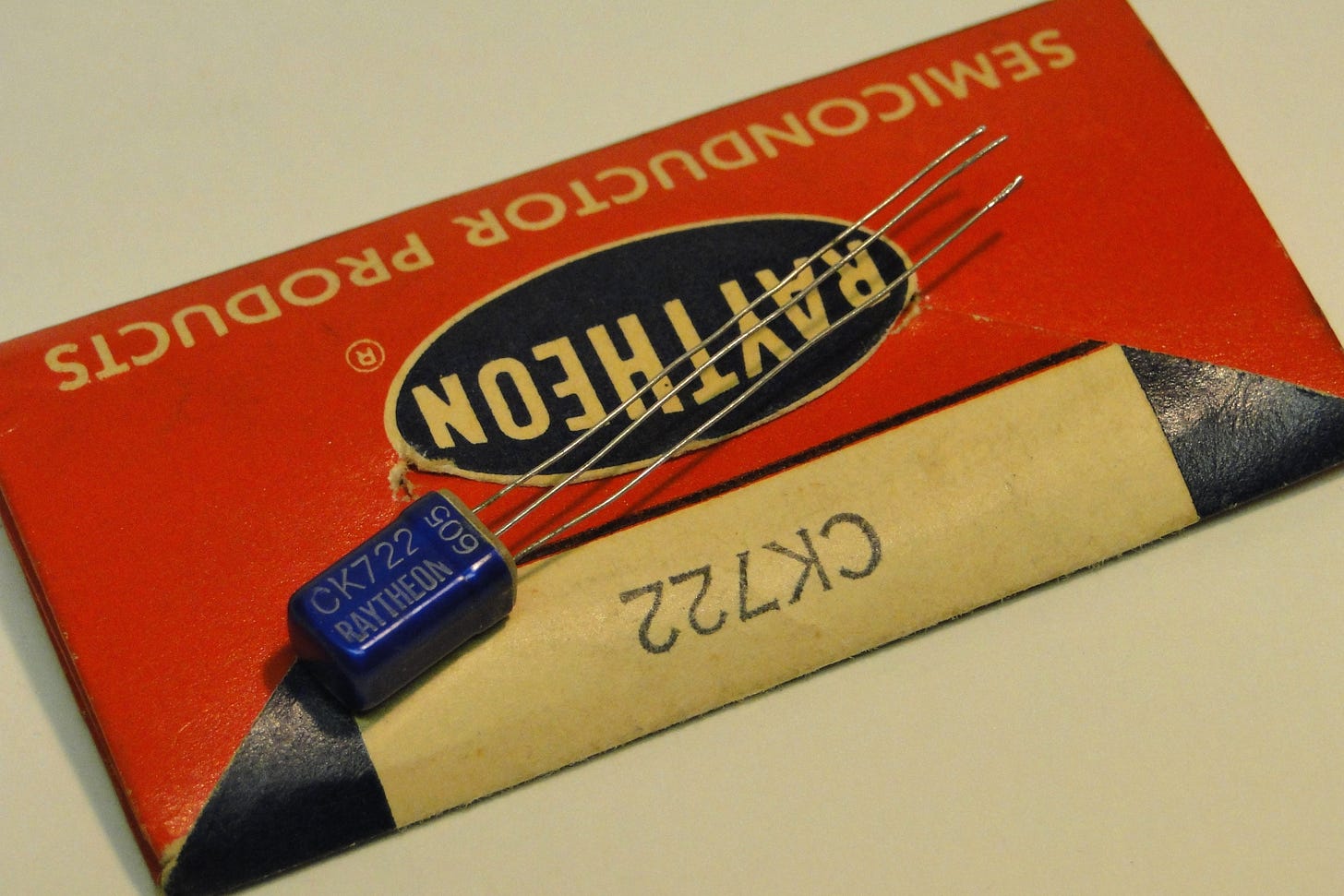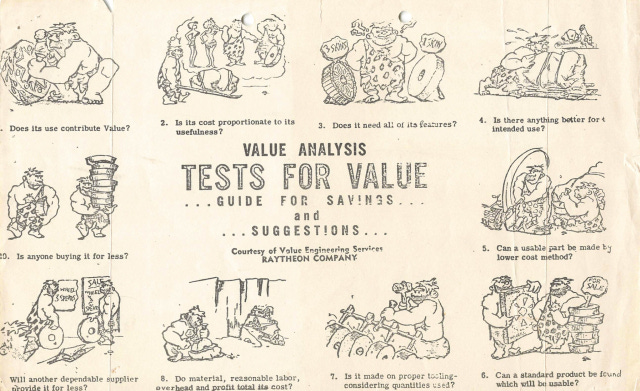How an engineering company defined 'value'
And how the answer changed since Aristotle's 4th C BC definition.

The Raytheon Company is a major U.S. defense contractor founded in 1922. In the 1950s, it began manufacturing transistors, including the CK722, priced and marketed to hobbyists. Was the one-pager below from around that time?

You may notice the list presupposes a shared understanding of the meaning of ‘value.’
Are the questions leading?
A lot on the value analysis list might seem like common sense. Then again, an entire lucrative management consulting industry built processes that should help companies answer these questions:
Does this contribute value?
Is its cost proportional to its usefulness?
Does it need all of its features?
Is there anything better for this intended use?
Can a usable part be made by a lower cost method?
Can a standard product be found which will be usable?
Is it made with proper tooling - considering quantities used?
Do material, reasonable labor, overhead, and profit total its costs?
Will another dependable supplier provide it for less?
Is anyone buying it for less?
Value engineering became a big movement in the late 1970s and early 1980s. The movement heralded a systematic method to improve the ‘value’ of goods or products and services by using an examination of function.
In the sequence the sheet presents, the questions seem to lead toward lean and ‘less is more.’
But the evolution of work seems to point in another direction.
Simple math in search of exponential growth
Quite often, when referring to ‘value’ today, people seem to be adding it. Research confirms that people favor adding over subtracting in problem solving.
An example of loss aversion? It’s literally the default. People don’t think about other options. Sunk-cost bias could be at play. Or perhaps a clue to the need for significance? I add, ergo I am. And companies may consider “adding” more creative. Subtracting just doesn't occur to people.
Adding has thus claimed a seat next to value in the modern psyche. Features, things, options, models, uses, size... everyone keeps adding and adding. And we lose sight of the value equation. Enlarging expectations, growing for the sake of growth, and so on.
We’re at the point where more is just more, without adding any value. In fact, a few things have run away from us, becoming unsustainable. Simple math in search of exponential growth gave us both, and that is not always a good thing.
Attention and incentives can help:
Adams and colleagues’ work points to a way of avoiding these pitfalls in the future — policymakers and organizational leaders could explicitly solicit and value proposals that reduce rather than add.
But the idea is not ‘less is more.’ Of course, nobody needs more of the things that are not useful, or valuable. We just need the right things at the right time.
To know right, figure out value
The test consists of reframing concepts (and words). What does value mean in different contexts? I found some useful definitions in a paper about value management for the construction industry.
Aristotle (4th century BC) distinguished between two meanings: ‘use-value’ and ‘exchange value.’ This is useful in industrial economics and manufacturing. But what's interesting is that ‘exchange value’ took off, and we overlooked ‘use-value.’
In the middle of the 18th Century, Adam Smith:
focused on “productive” activities that contributed to exchange value through the manufacturing and distribution of tangible goods.
And here’s where the exchange happens through money. Exchange value all the way down. You fix a price, the buyer needs to be willing to pay it.
In the last century, the focus has been on defining the ‘productive activities’ that create value for customers. Streamlining processes to increase profit has been part of the conversation. Hence the Raytheon Company one-pager.
But what about customers?
Keep reading with a 7-day free trial
Subscribe to On Value in Culture to keep reading this post and get 7 days of free access to the full post archives.





